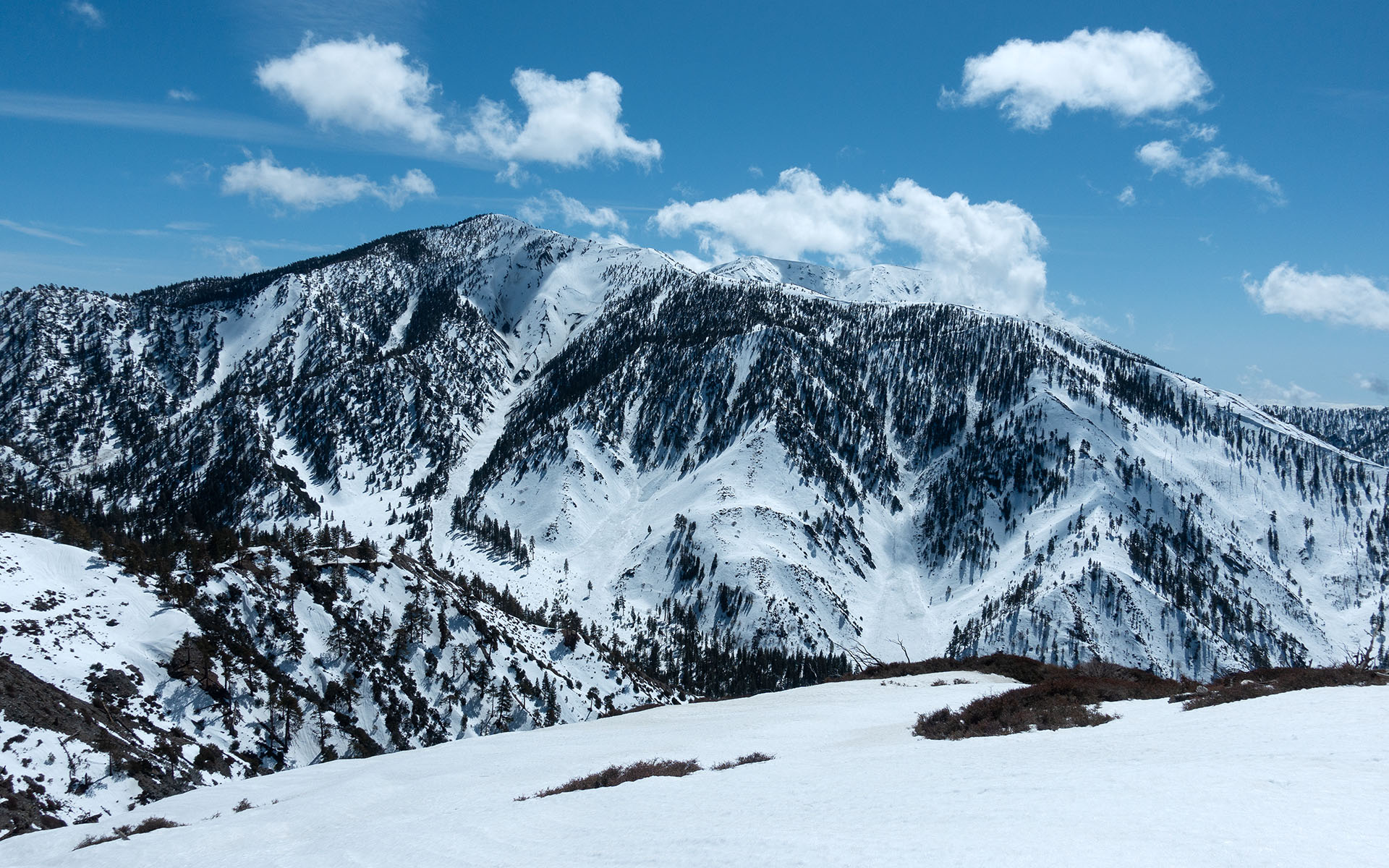Learning To Read The Mountain

It's time to play God. Please take a gigantic bucket of water, dump it on your favorite mountain, and then watch carefully as all that water flows down the hill.
Real or imagined, the path of water reveals the interplay of terrain and gravity, collecting and pooling in some places (let's call those "terrain traps"), avoiding and bypassing others (let's call those "islands of safety").
If you don't have a god-sized bucket of water, you can look for patterns of tree growth and rockfall to identify areas of hazard. Ridges and spines create areas of relative safety; bowls, gullies, and funnels act like multipliers.
The Five Minute Avalanche Challenge tells us that avalanche potential is highly dependent on slope angle. That means you can easily identify areas where avalanches are likely (or not) just by learning to identify pitch.
Whenever you're on safe ground, make a habit of estimating the slope angle around you—and check your work with an inclinometer. You can find these on good navigation compasses or even get one as a smartphone app.
37.5 degrees—the critical angle for slab hazard—is broadly equivalent to the steepness you'll find on the headwall of a typical North American black ski run. Learn to feel that angle in your gut, like a bit of indigestion, whenever you're standing on it, and especially if it is accompanied by slope convexity.
In addition to creating avalanche hazard, gravity can also set rocks—or you—in motion. Learn to ask yourself, periodically, "What happens if I fall here?" and also "What can fall on me?"
A guide once told me he set his watch alarm to chime every fifteen minutes in the backcountry, to remind him to stop, look around, and ask questions.
He was trying to develop something much like the moment-to-moment awareness taught by mindfulness-based behavioral therapies like MBCT or ACT, cleverly repurposed for a wilderness context.
If you're traveling with a partner, both of you should actively share and discuss your observations with each other. Those north faces look a bit icy to me today. Yeah—and what do you think about that wind coming off the ridgeline?
Working together, a good group can create a shared field of awareness of gravity and terrain that is broader and (hopefully) more accurate than what you can do on your own.
The beauty of learning to read a mountain's terrain is there are no secrets.
Unlike layers of instability hidden deep within a snowpack, a mountain's topography is right there for you to see. That balanced rock, that talus field or cliff, that hot sun above you, that stripped and gnarled tree—they're all right there in front of you.
Learn to listen to the mountain, and you'll find the mountain has a lot to say.
Next: The Life of Snow
— December 8, 2023
Andy Lewicky is the author and creator of SierraDescents